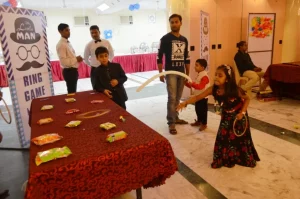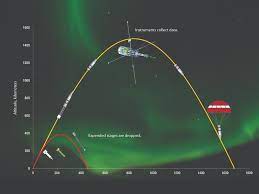Chapter 3:Pair of Linear equation in two variables
Case Based 1:- A book store shopkeeper gives books on rent for reading. He has variety of books in his store related to fiction, stories and quizzes etc. He takes a fixed charge for the first two days and on addition charge for subsequent day. Amruta paid ₹ 22 for a book and kept for 6 days, while Radhika paid ₹ 16 for keeping the book for 4 days . Assume that the fixed change be ₹ x and additional change(per day) be ₹ y.(Class 10 Case based problem of Chapter 3 Pair of Linear eq 1)

Based on the above information, answer any four the following question:
(A) The situation of amount paid by Radhika, is algebraically represented by
(a) x – 4y = 16
(b) x + 4 y = 16
(c) x – 2y = 16
(d) x + 2y = 16
(B) The situation of amount paid by Amruta, is algebraically represented by
(a) x – 2y = 11
(b) x – 2y = 22
(c) x + 4y = 22
(d) x – 4y =11
(C) What are the fixed charges for a book ?
(a) ₹ 9 (b) ₹ 10
(c) ₹ 13 (d) ₹ 15
(D) What are the additional charges for each subsequent day for a book ?
(a) ₹ 6 (b) ₹ 5
(c) ₹ 4 (d) ₹ 3
(E)What is the total amount paid by both, if both of them have kept the book for 2 more days ?
(a) ₹ 35 (b) ₹ 52
(c) ₹ 50 (d) ₹ 58
Solution:- (A) Answer (d) x + 2y = 16
Explanation:
Radhika kept book for 4 days and paid ₹ 16.
Hence, x + 2y =16
(B) Answer (c) x + 4y =22
Explanation:
Since Amruta kept book for 6 days and paid ₹ 22
Hence, x + 4y = 22
(C) Answer (b) ₹ 10
Explanation:
From A and B. we have
x + 2y = 16 —–(i)
x + 4y = 22 —–(ii)
Subtracting (i) to (ii) we get
(x + 2y) – (x + 4y) = 16-22
⇒ x + 2y – x- 4y = -6
⇒ -2y = -6
⇒ y = 3
Replacing the value of y in (i)
x + 2y = 16
⇒ x + 2×3 = 16
⇒ x = 16 – 6
⇒ x = 10
Fixed charges = ₹ x = ₹ 10
(D) Answer (d) ₹3
From solution (C) Additional charges for each subsequent day = ₹ y = ₹ 3
(E) Answer (c) ₹ 50
Explanation:
If both of them have kept the book for 2 more days
= 16 +2y + 22 +2 y
= 38 + 4×3
= 38 + 12
= ₹ 50
Case Based 2:- Raman went to a local mela during dussehra. He ate several rural delicacies such as jalebis chaat etc. He also wanted to play the ring game in which a ring is thrown on the items displayed on the table and the balloon shooting game.


The cost of three balloon shooting games exceeds the cost of four ring games by ₹ 4. Also, the total cost of three balloon shooting games and four ring games is ₹ 20.
(A) Taking the cost of one ring game to be ₹ x and that of one balloon game as ₹y, the pair of linear equations describing the above situations are:
(a) -4x – 3y = -4 and 4x + 3y = 20
(b) 4x – 3y = 4 and 4x + 3y = 20
(c) 4x – 3y = -4 and 4x + 3y = 20
(d) -4x + 3y = -4 and 4x + 3y = 20
(B) The cost of one ring game and one balloon game is :
(a) ₹ 2 and ₹ 4
(b) ₹4 and ₹ 2
(c) ₹8 and ₹2
(d) ₹ 6 and ₹ 3
(C) The points where the line represented by the equation 4x – 3y = -4 intersects the x-axis and y-axis, respectively, are given by:
(a) (1, 0), (0, 4/3) (b) (-1, 0), (0, 4/3)
(c) (-1, 0), (0, -4/3) (d) (1, 0), (0, -4/3)
(D) The area of the triangle formed by the two lines and the x- axis is:
(a) 4 sq. units (b) 6 sq. units
(c) 8 sq. units (d) 12 sq. units
(E) The value of k for which the pair of linear equations – x + y = -1, x + ky = 5 will be inconsistent, is:
(a) k = 1 (b) k = -1
(c) k ≠ -1 (d) k ≠ 1
Solution:
(A) Answer (c) 4x – 3y = -4 and 4x + 3y = 20
Explanation: Given the cost of one ring game = ₹ x and cost of one balloon game = ₹ y.
According to the question,
4x – 3y = -4 and 4x + 3y = 20
(B) Answer (a) ₹ 2 and ₹ 4
Explanation:From Solution (A)
4x – 3y = -4 ——(i)
4x + 3y = 20 ——- (ii)
Subtracting (i) to (ii)
(4x – 3y) – (4x + 3y) = -4 – 20
⇒ 4x – 3y – 4x – 3y = -24
⇒ – 6y = – 24
⇒ y = 4
Putting in equation (i)
4x – 3×4 = -4
⇒ 4x = -4 + 12
⇒ 4x = 8
⇒ x = 2
The cost of one ring game = ₹ 2
The cost of one balloon game = ₹ 4
(C) Answer (b) (-1, 0), (0, 4/3)
Explanation: The line represented by the equation 4x – 3y = -4 will intersect the x-axis for y = 0.
4x – 3×0 = -4
⇒ 4x = -4
⇒ x = -1
Therefore, point is (-1, 0)
The line will intersect the y-axis for x = 0.
So, -3y = -4
⇒ y = 4/3
Therefore the point is (0, 4/3)
(D) Answer (d) 12 sq. units

Area of triangle ΔABP = ![]() × Base × Height
× Base × Height
![]()
= 12 sq. units
(E) Answer (b) k = -1
Explanation: For the pair of linear equation to be incosistent is
![]()
![]()
![]()


